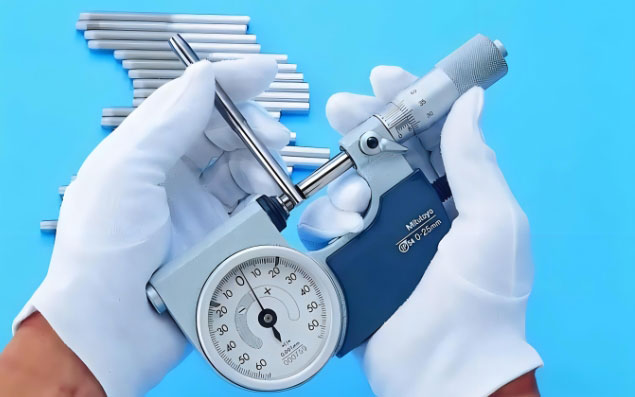CNC Machining Accuracy Explained
CNC (Computer Numerical Control) machining is a widely used, efficient, and precise machining technology in modern manufacturing. Machining accuracy is a critical indicator for evaluating the quality of CNC machining, directly impacting the performance and lifespan of the final products. This article provides a detailed exploration of CNC machining accuracy, including its definition, influencing factors, methods for enhancement, and practical applications.
1. Definition of CNC Machining Accuracy
CNC machining accuracy refers to the conformity of the actual dimensions, shapes, positions, etc., of machined parts with the design requirements. It primarily includes the following aspects of precision:
- Dimensional Accuracy
- Dimensional accuracy refers to the deviation between the actual dimensions of machined parts and their design dimensions. It is commonly expressed using tolerance bands (Tolerance), where smaller tolerance bands indicate higher dimensional accuracy.
- Geometric Accuracy
- Geometric accuracy refers to the deviation between the actual shape of machined parts and their design shape, including roundness, flatness, straightness, etc. Higher geometric accuracy entails smaller shape errors.
- Positional Accuracy
- Positional accuracy refers to the deviation between the actual position of machined parts and their designed position, including coaxiality, symmetry, parallelism, etc. Higher positional accuracy corresponds to smaller positional errors.
2. Factors Influencing CNC Machining Accuracy
Several factors influence CNC machining accuracy, including:
- Machine Tool Accuracy
- The manufacturing precision and rigidity of the machine tool directly affect machining accuracy. High-precision, high-rigidity machine tools can better withstand vibrations and deformations during machining, thereby enhancing machining accuracy.
- Tool Accuracy
- The geometric accuracy and wear condition of tools significantly impact machining accuracy. High-precision tools ensure stable cutting edge performance, reducing machining errors.
- Fixture Accuracy
- The positioning accuracy and clamping force of fixtures also affect machining accuracy. Precise positioning and stable clamping minimize workpiece movement and deformation during machining.
- Machining Parameters
- Machining parameters such as cutting speed, feed rate, and depth of cut directly influence machining accuracy. Proper machining parameters can reduce thermal deformation and vibrations during machining, thus improving accuracy.
- Environmental Factors
- Environmental temperature and humidity affect thermal expansion of machine tools and workpieces, thereby influencing machining accuracy. Maintaining a constant temperature environment and proper temperature control can reduce thermal deformation and improve accuracy.
3. Methods to Enhance CNC Machining Accuracy
To enhance CNC machining accuracy, consider the following methods:
- Select High-Precision Machine Tools
- Choosing high-precision, high-rigidity CNC machine tools forms the foundation for improving machining accuracy. Quality machine tools provide a stable machining environment, reducing machining errors.
- Use High-Precision Tools
- Select high-precision, wear-resistant tools and conduct regular tool inspection and replacement to maintain geometric accuracy and cutting performance.
- Optimize Fixture Design
- Design and use high-precision fixtures to ensure stability and accurate positioning of workpieces. Avoid fixture deformation and workpiece loosening to minimize machining errors.
- Set Machining Parameters Rationally
- Based on material characteristics and machining requirements, set cutting speed, feed rate, and depth of cut parameters appropriately to reduce thermal deformation and vibrations during machining.
- Control Machining Environment
- Conduct machining in a constant temperature environment to prevent temperature fluctuations from affecting machine tools and workpieces. Use cooling fluids and air cooling methods when necessary to control machining temperatures.
- Implement Online Inspection and Feedback
- Employ online inspection and feedback systems to monitor dimensional and shape errors during machining in real-time. Perform timely compensation and adjustments to improve machining accuracy.
4. Practical Applications of CNC Machining Accuracy
CNC machining accuracy plays a crucial role in various high-demand fields:
- Aerospace
- Aerospace applications require high dimensional and shape accuracy for components. High-precision CNC machining ensures the performance and safety of aircraft, satellites, and spacecraft components.
- Medical Instruments
- Medical devices such as artificial joints, implants, and surgical instruments demand stringent machining accuracy. CNC machining provides high precision and surface quality for medical device components, ensuring their safety and reliability.
- Mold Manufacturing
- Mold manufacturing demands high precision and surface finish to ensure stable product quality. CNC machining accurately processes complex shapes and fine structures of molds, enhancing mold lifespan and product quality.
- Automotive Manufacturing
- Key components in automotive manufacturing, such as engines, transmissions, and suspension systems, require strict machining accuracy. High-precision CNC machining ensures the performance and lifespan of these components, enhancing vehicle safety and comfort.
Conclusion
CNC machining accuracy is a vital indicator for evaluating machining quality, influencing the performance and lifespan of final products. By selecting high-precision machine tools, tools, and fixtures, optimizing machining parameters, controlling the machining environment, and implementing online inspection and feedback systems, CNC machining accuracy can be significantly improved. In aerospace, medical instruments, mold manufacturing, automotive manufacturing, and other fields, high-precision CNC machining technology plays a crucial role in advancing modern manufacturing industries.

